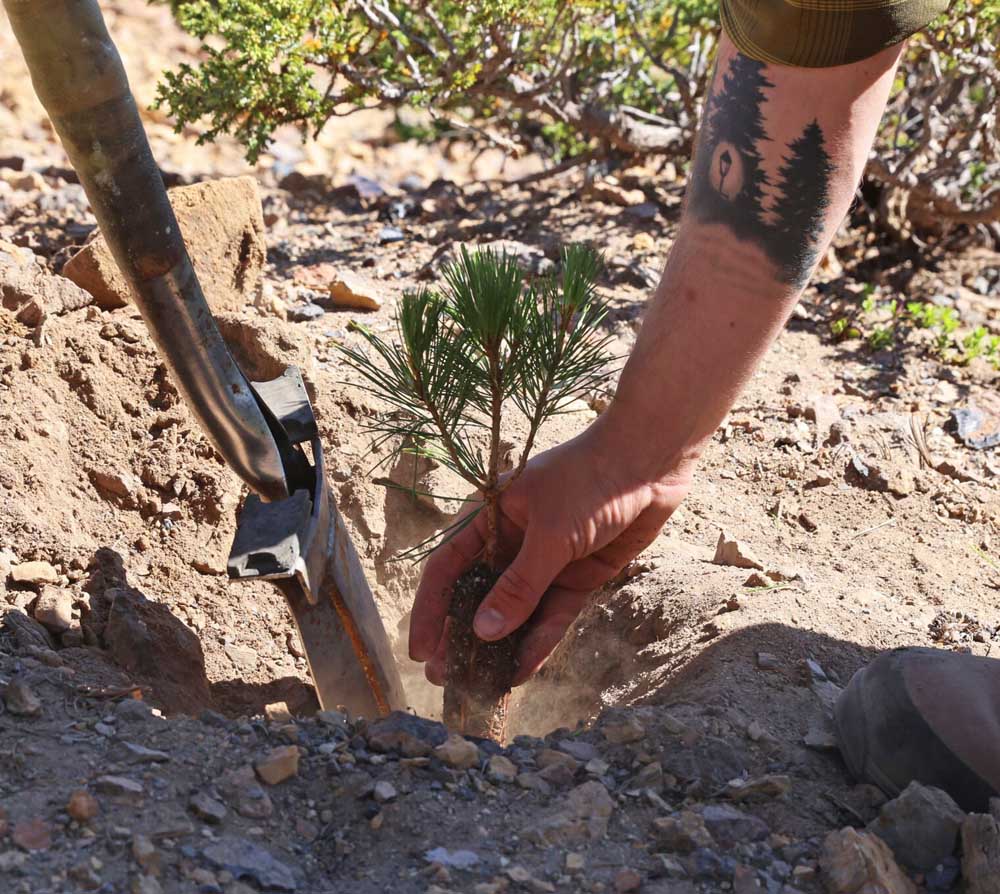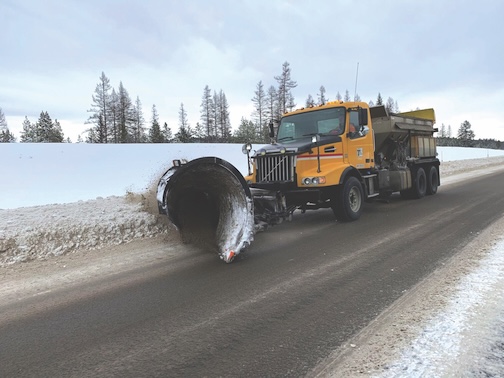Whitebark pine seedlings planted atop Paulina Peak in effort to save species
Published 5:00 am Friday, July 15, 2022

- U.S. Forest Service silviculturist Michael Dominguez plants a whitebark pine seedling July 14, 2022, on top of Paulina Peak, south of Bend.
NEWBERRY CRATER — On a windswept promontory in Central Oregon, the embattled whitebark pine is being given a second chance to thrive.
Trending
Around 100 seedlings of the threatened tree were carefully planted Thursday, July 14, on Paulina Peak as part of a project to bring back the species, which has succumbed to blister rust disease at an alarming rate. Bark beetles and climate change have also contributed to their decline.
U.S. Forest Service employees planted the 6-inch-tall whitebark pine trees near rocks and logs, which will provide shade for the trees and a better chance to grow. The seedlings are the offspring of whitebark pines that were found to be genetically resistant to the white pine blister rust, a nonnative fungus that slowly kills the pines.
The planting work was the final stage in a two-year project that has seen thousands of whitebark pine seedlings planted on Paulina Peak. The planting of the current round of seeds was funded by San Francisco-based tech firm SalesForce.
Trending
Thousands more seedlings resistant to blister rust have been planted in recent years across the Deschutes National Forest.
As of 2016, half of all standing whitebark pine trees were dead, according to the Forest Service. They are now being considered for an Endangered Species Act listing by the U.S. Fish and Wildlife Service, which oversees such protections.
The Forest Service hopes that the whitebark pine seedlings will one day grow to be the photogenic trees known for their gnarled appearance.
“It’s one of these species that you see in these really iconic Western spaces. Crater Lake, Banff, the High Sierra, Glacier National Park are in part iconic because of their whitebark pine,” said Elizabeth Pansing, a forest and restoration scientist with American Forests, the oldest conservation group in the U.S.
Pansing has traveled widely across North America, visiting whitebark pine forests that have been decimated by the fungus and beetles, as well as forests that still thrive. Dead areas are just silent, she says. By contrast, forests that have survived are bustling and full of life.
“You hear nutcrackers all over the place. It’s alive with energy. You have squirrels that are harvesting the cones from the trees. You have bears that are rummaging around. It’s this living embodiment of energy,” said Pansing.
A plan to restore whitebark pine forests, spearheaded by the Forest Service and American Forests, covers seven states. In the Pacific Northwest, restoration is happening in 16 national forests, as well as Bureau of Land Management land and national parks. Restoration work is also underway in parts of Canada.
The work to restore whitebark pine forests dates back to the late 1990s. The projects rely on foresters searching for healthy whitebark pines that thrive amid dying pines affected by the blister rust. Seeds from these healthy trees, known as “plus trees,” are collected and grown at nurseries.
The nursery trees are exposed to blister rust and those with high levels of resistance are called “elite trees.” Seeds from elite trees can be grown and planted in areas slated for restoration.
The process is essentially speeding up natural selection.
“If seedlings from a given tree do well in the trials, we collect more seed from those trees in the field and use that seed to produce seedlings for reforestation,” said Matt Horning, a geneticist with the Deschutes National Forest.
The agency takes advantage of the naturally occurring resistance found in some trees to replant in areas where whitebark pine has been lost due to fire or disease.
Andrew Bower, also a Forest Service geneticist, said it’s too soon to start breeding the resistant trees because whitebark pines grow very slowly and will not start producing seeds until they are 50 or 70 years old.
“Our best option is to identify those individuals that have resistance and return back to them to collect the seeds that they produce naturally every few years to build an inventory of seeds,” said Bower.
Around 80% of the seedlings are expected to survive, said Bower.
“The majority of them will be able to withstand the rust disease and grow and become the new forests,” he said. “I feel like these rust-resistant seedlings are our best hope for perpetuating whitebark pine on the landscape.”
While some of the results are expected in a few years, Bower notes it will take several hundred years for the seedlings to grow into new forests. And humans will need some help from birds to make it work, specifically Clark’s nutcracker.
The nutcracker — a gray bird with black wings — has a co-evolved with the whitebark pine. The tree provides a food source for the bird, and in return, the nutcracker disperses and buries the tree’s seeds. Whitebark pines are almost completely reliant on the nutcracker because their cones do not open when the seeds are ripe — they need the nutcracker to extract and bury the seeds.
The Forest Service is taking advantage of this relationship by planting the seedlings in concentrated “core areas” that can serve as dissemination centers for nutcrackers to collect and disperse seeds into surrounding areas.
Bower said the survival of the trees will have widespread benefits and will help to support entire ecosystems, providing food and shelter for wildlife. The trees are also good for the earth — their roots hold the soil in place, preventing erosion, and their canopy provides shading for snowpack, slowing melting.
“It has a number of cascading effects,” said Bower. “Whitebark pine is a keystone species where it is found.”









